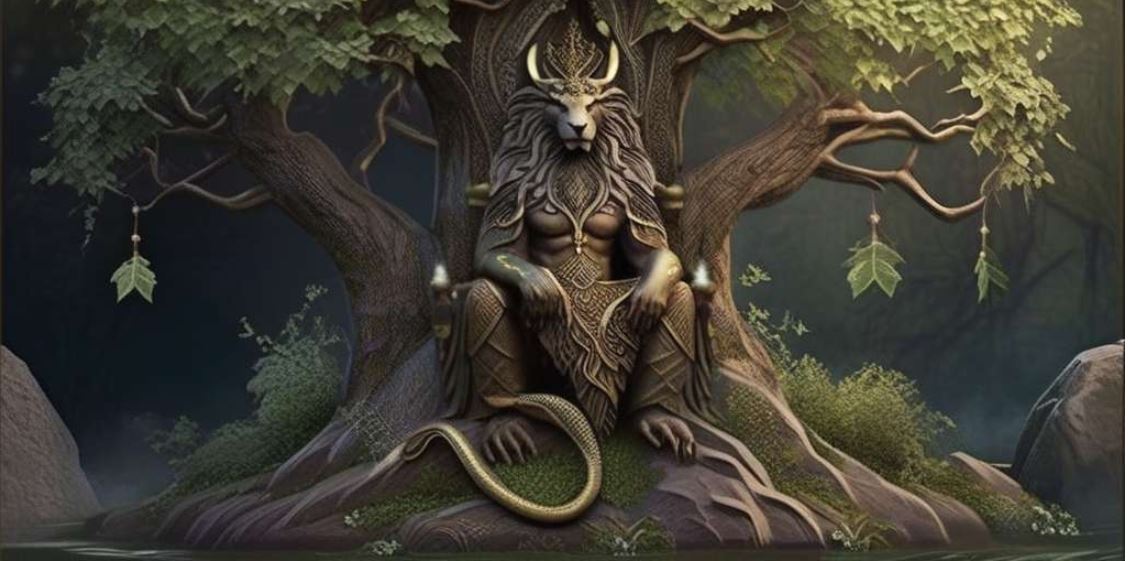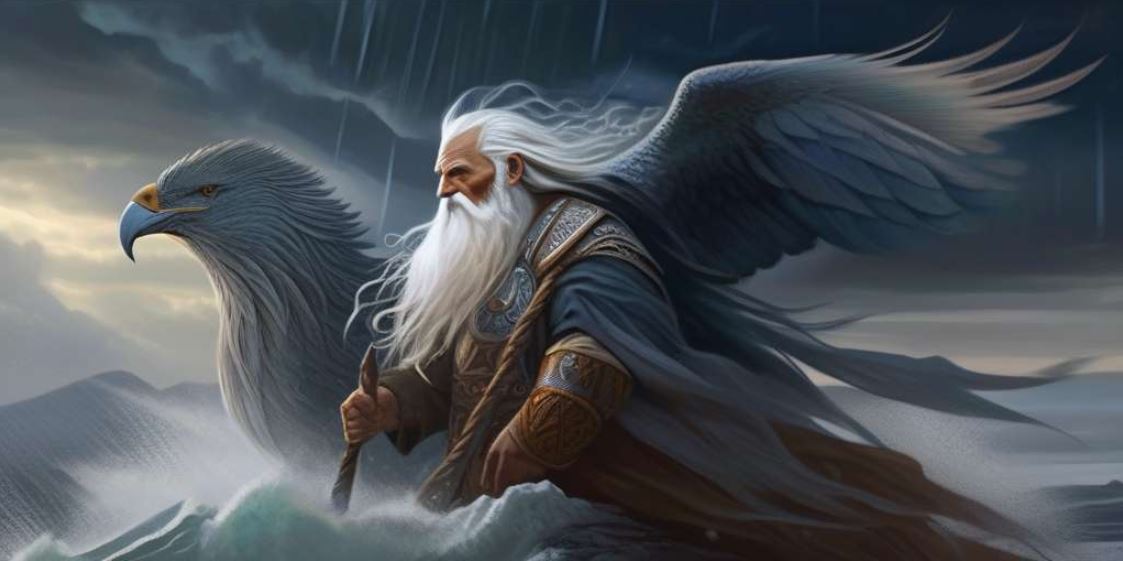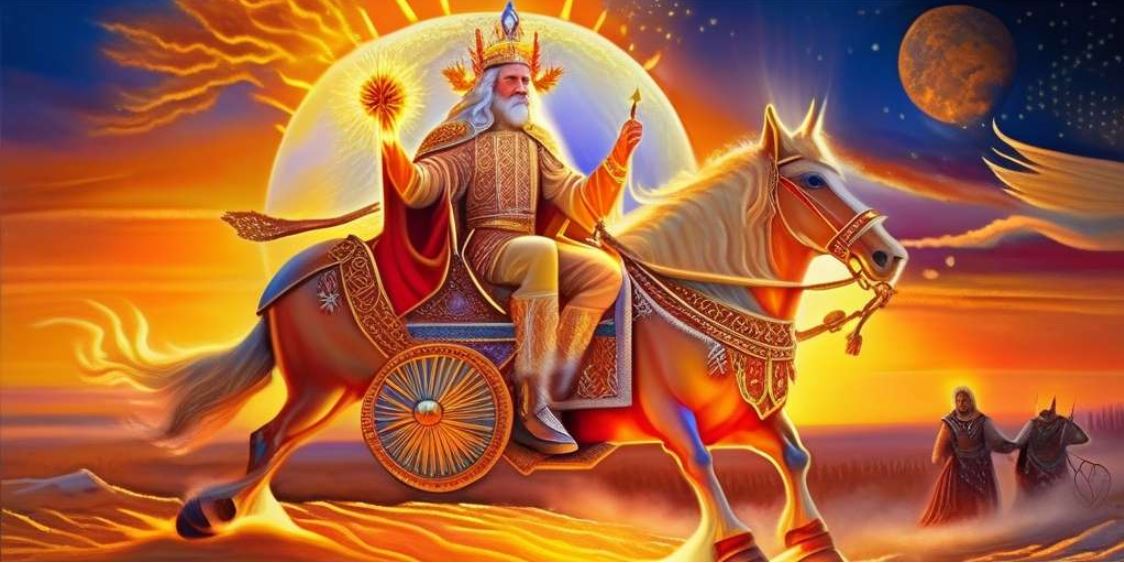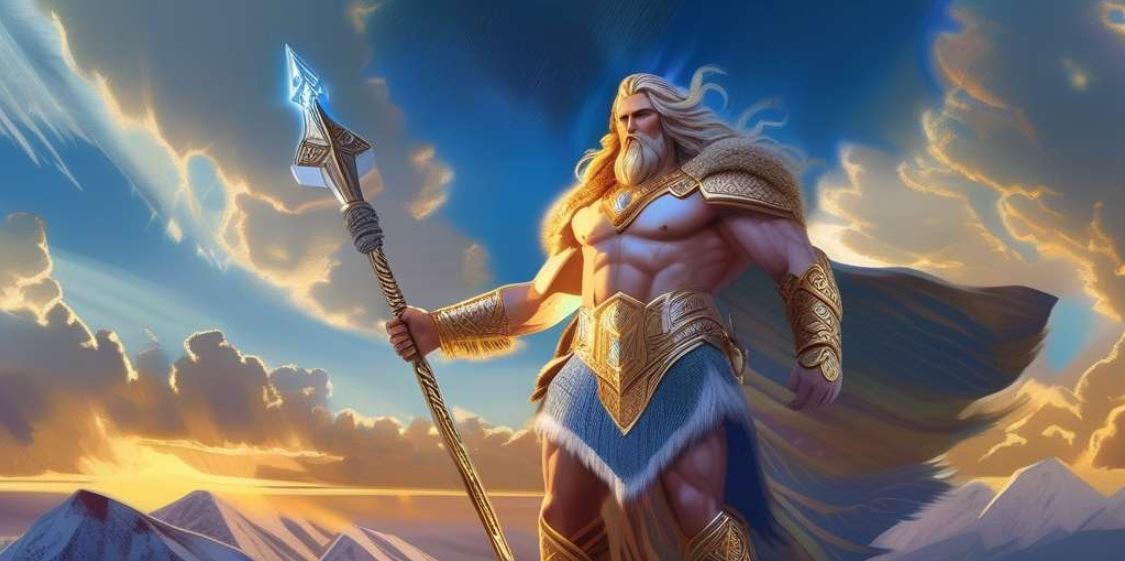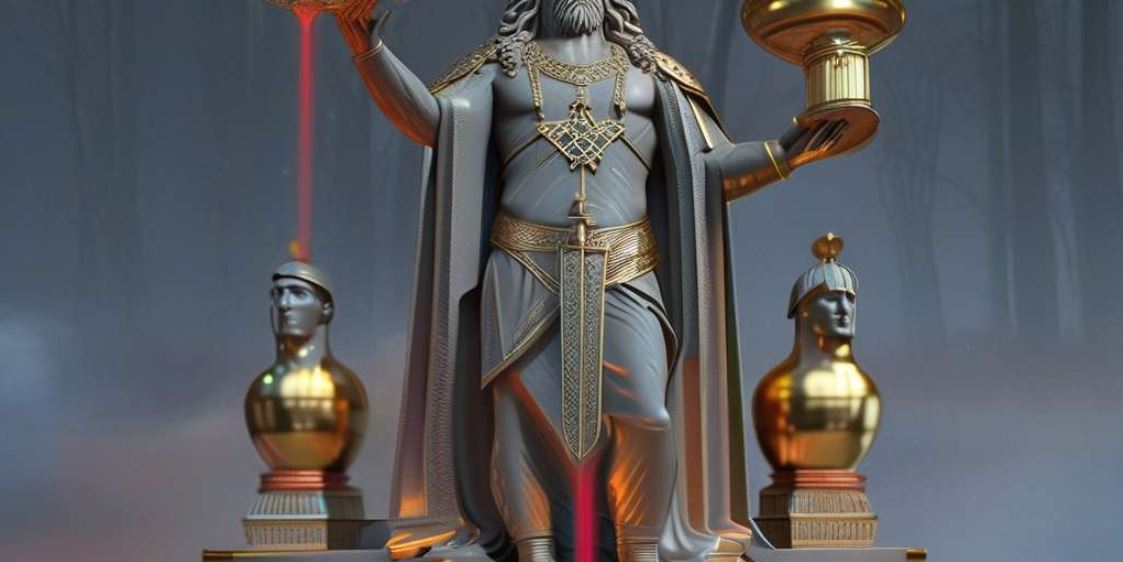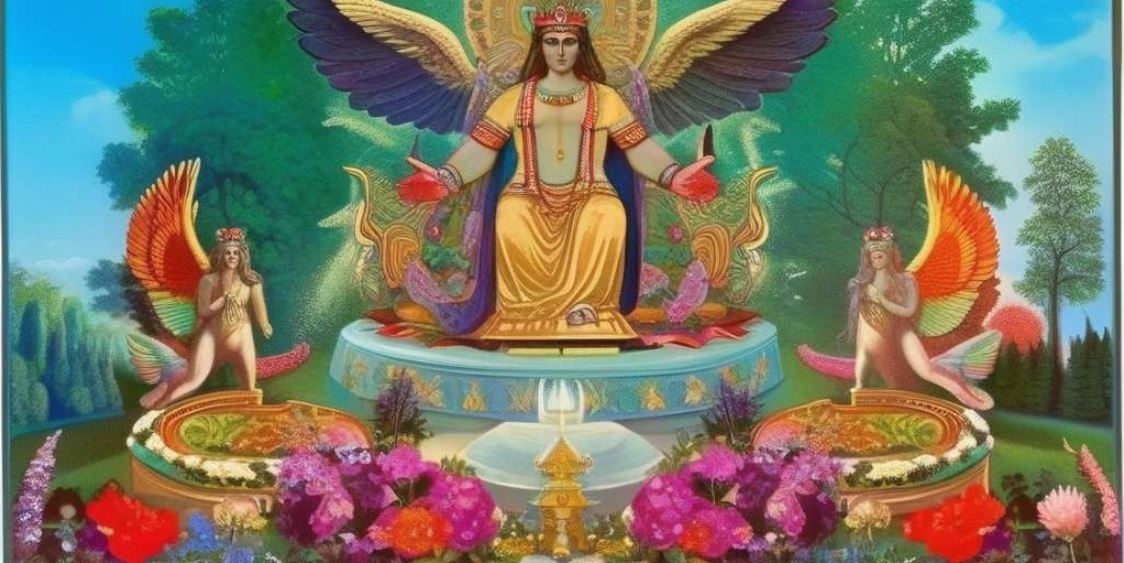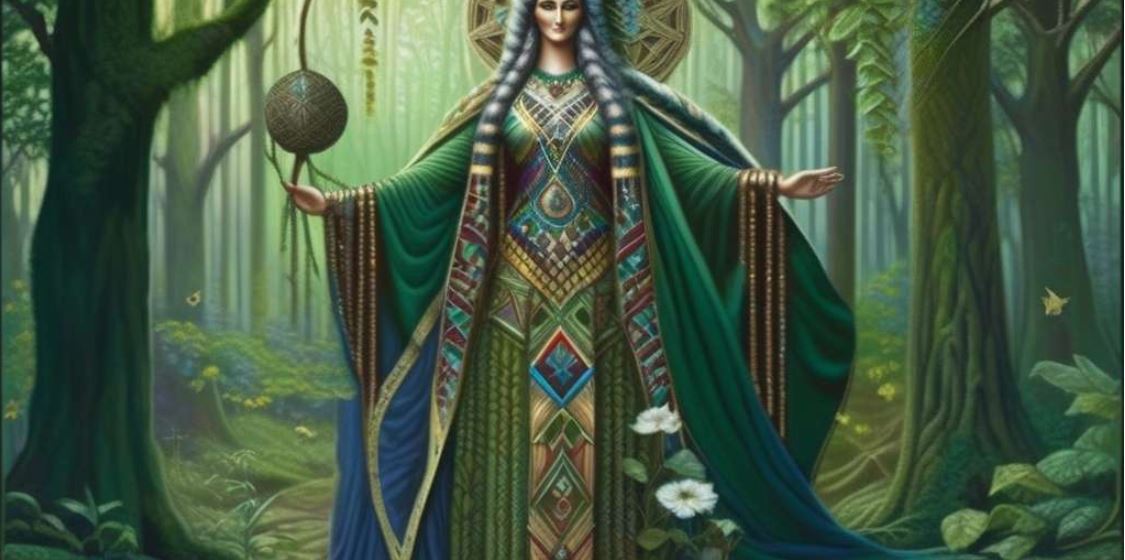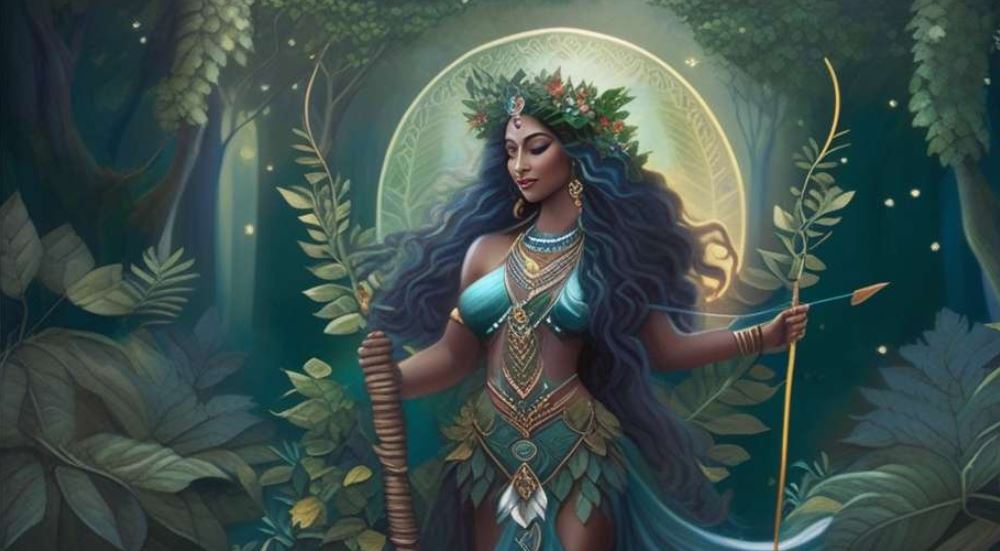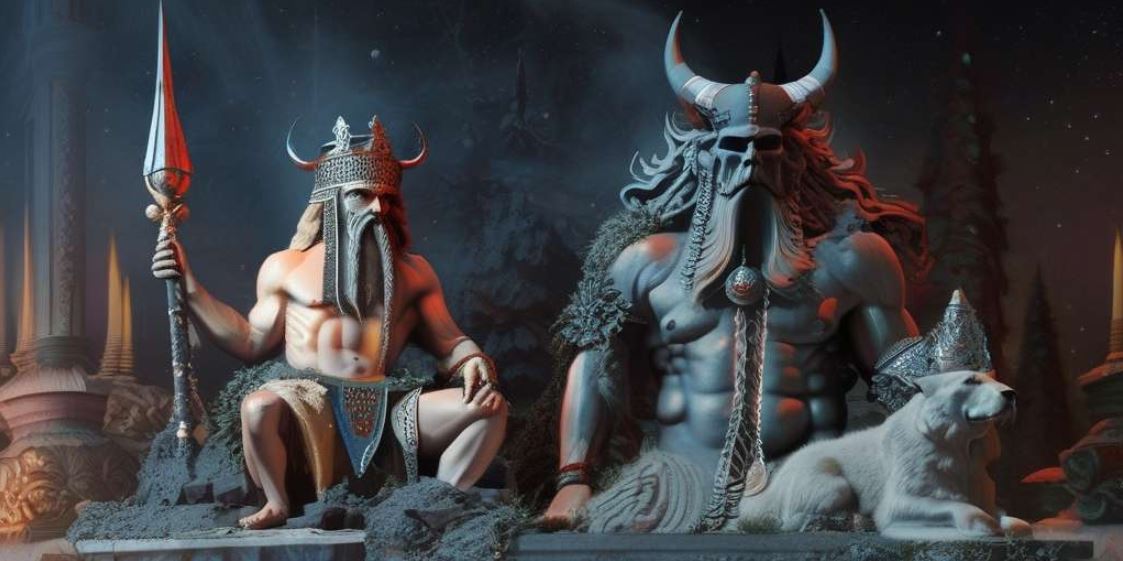Slavic God Veles: Unveiling the Mysteries of this Ancient Deity
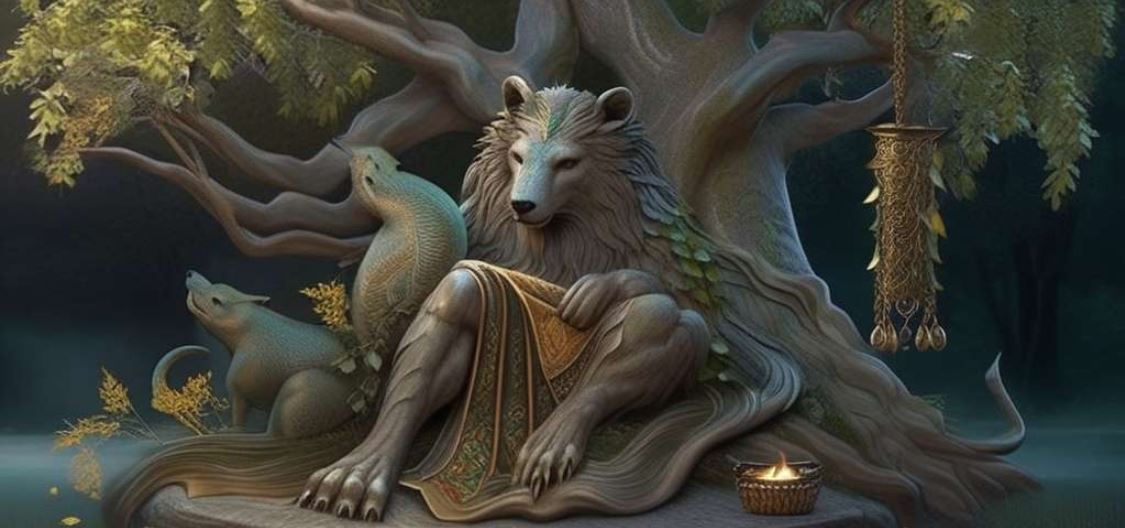
Veles, also known as Volos, is a significant deity in Slavic mythology. Associated with earth, water, cattle, and the underworld, Veles shares similarities with other gods like Odin, Loki, and Hermes.
Represented as a dragon-like creature, Veles holds a sacred connection with the willow tree, while the supreme thunder god Perun embodies the oak tree. Evidence of offerings to Veles can be found across Slavic nations, with historical records mentioning his role as a deity of cattle and peasants.
The separation of Veles’ worship from Perun’s was common, with Perun revered on hilltop sanctuaries and Veles in lower lands.
The Nature and Attributes of Veles
Veles, a significant deity in Slavic mythology, embodies various aspects of nature and holds unique attributes that set him apart from other gods.
This section delves into the captivating characteristics and symbolism associated with Veles.
Veles as the God of Earth, Water, and Cattle
Veles is revered as the god of earth, water, and cattle, embodying the essential elements of sustenance and fertility. As a guardian of the natural world, he presides over the abundant resources of the land, the flowing waters, and the prosperity of livestock.
His influence over these domains signifies the interconnectedness between humans and the natural forces that sustain them.
Veles in the Underworld and His Association with the Dead
Beyond his dominion over the earthly realms, Veles also holds a significant role in the underworld and has a profound association with the realm of the dead. He acts as a guide and protector of departed souls, navigating them through the mysterious depths of the afterlife.
This connection between Veles and the underworld highlights his multifaceted nature and extends his influence beyond mortal existence.
Symbolism of Veles as a Dragon-like Creature
Veles is symbolized as a dragon-like creature, a chimera that combines the traits of a bear and a serpent. This unique depiction embodies his power, representing the union of the formidable strength of the bear and the serpentine wisdom and cunning.
The dragon symbolism further emphasizes Veles’ transformative nature and his ability to traverse realms.
Comparison of Veles with Other Gods in Slavic and European Mythology
When comparing Veles with other gods in Slavic and European mythology, intriguing parallels and similarities emerge. Veles shares qualities with deities such as Odin, Loki, and Hermes, connecting the Slavic pantheon to broader mythological traditions.
These resemblances shed light on the universal themes and archetypes present in various cultural belief systems.
Worship and Rituals Associated with Veles
A notable aspect of Slavic mythology was the separation of Veles’ worship from that of Perun, the supreme thunder god. The spatial distinction between their sanctuaries, with Perun worshiped on hilltops and Veles revered in lowlands, highlights the unique significance of each deity.
This separation offered a nuanced understanding of their respective roles and showcased the diverse archetypes present in Slavic folklore.
By exploring the rites and rituals associated with Veles, we gain a deeper appreciation for the beliefs and spiritual practices of ancient Slavic civilizations.
The evidence of offerings and devotion to Veles, recorded in historical sources, speaks volumes about the devout reverence for this enigmatic deity. Understanding Veles’ role in punishing oath breakers and the significance of separating his worship from that of Perun allows us to grasp the intricacies of Slavic mythology from a fresh perspective.
Veles in Slavic Culture and Toponyms
For instance, the city of Veles in Macedonia stands as a testament to the enduring cultural influence of this Slavic god.
The City of Veles and its Connection to Slavic Mythology
Situated near the hill called San Elías el Tronador, the city’s very name pays tribute to the deity Veles. This connection serves as a reminder of the deep intertwining of myth and reality within Slavic culture, where Veles’ influence extended beyond religious beliefs to shape the very fabric of their cities and landscapes.
Veles’ mythical presence is not limited to religious contexts alone. His influence extends into the realm of folk tales and folklore, where he often features as a significant character. Legends and stories depict Veles’ interactions with other gods, his role as a shapeshifter, and his connections to the natural world.
The Nature and Attributes of Veles
Additionally, in his association with the underworld, Veles holds dominion over the realm of the dead.
Symbolism of Veles as a Dragon-like Creature
Comparison of Veles with Other Gods in Slavic and European Mythology
4.2. Significance of Understanding Slavic God Veles in Modern Times
Preserving Cultural Heritage and Identity
Studying and understanding the importance of Slavic god Veles allows us to preserve and celebrate the rich cultural heritage of the Slavic nations. Through exploring Veles’ mythology, we gain insights into the values, beliefs, and traditions of our ancestors.
Exploring the Complexity of Nature and the Underworld
Veles’ association with earth, water, and the underworld provides a deeper understanding of the intricate relationship between humans and the natural world. By delving into Veles’ mythology, we can grasp the complex dynamics of life, death, and the spiritual realms.
Inspiration for Art, Literature, and Popular Culture
Veles’ captivating symbolism as a dragon-like creature and his role in Slavic mythology serve as a wellspring of inspiration for art, literature, and popular culture. From visual representations to literary works, Veles’ influence continues to spark creativity and imagination in various artistic endeavors.
Connecting Past and Present
By exploring the significance of Slavic god Veles in modern times, we establish a bridge between the ancient traditions and the contemporary world. This connection fosters a sense of continuity and reminds us of our roots, fostering a deeper appreciation for our cultural heritage.
- Preserving Cultural Heritage and Identity
- Exploring the Complexity of Nature and the Underworld
- Inspiration for Art, Literature, and Popular Culture
- Connecting Past and Present
…………

